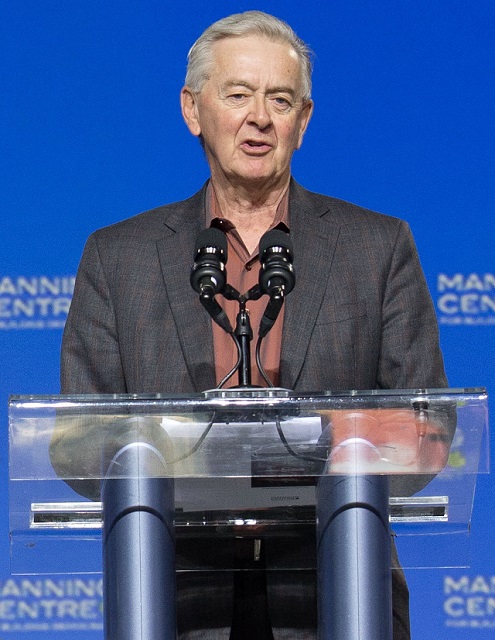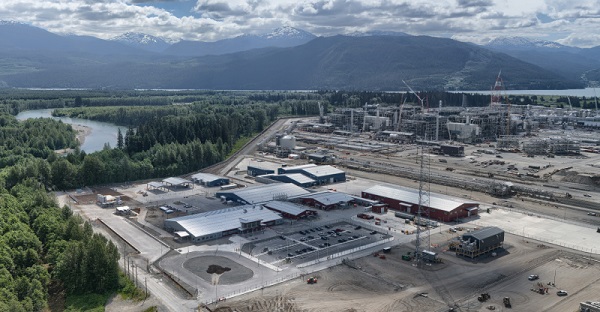Alberta
Alberta Covid-19: Alberta announces ban on visitors at care centres province-wide

Dr. Deena Hinshaw, Chief Medical Officer of Health for Alberta has ordered a province-wide ban on visitors that applies to all licensed supportive living, long-term care centres, continuing care facilities, licensed group homes, residential addiction treatment operators and other facilities licensed under the Mental Health Services Protection Act.
The amended public health order is part Alberta’s ongoing work to limit the spread of COVID-19 and protect Albertans. There are two exceptions with a health pre-screening; if a resident is dying or the visitor is essential for delivering care that cannot be delivered by staff.
Dr. Hinshaw said, “Residents of all continuing care sites are at extreme risk if exposed to COVID-19, and we are doing everything possible to ensure their safety. I know this will have a profound impact on the lives of those residents and their families; this is not a step that we take lightly. I’m asking all Albertans to reach out and support their loved ones through the phone, video and any other means possible.”
Alberta Minister of Health, Tyler Shandro added, “This order is an aggressive but necessary step to help limit the spread of COVID-19 and protect the health of vulnerable Albertans. Our government will support any action needed to protect the lives of residents at continuing care facilities across the province.”

Alberta Minister of Health, Tyler Shandro talks at a press release at the Legislature in Edmonton. Photo Courtesy/Government of Alberta
Family, friends and religious leaders will still be allowed to visit a resident who is dying. In these cases, only one visitor can enter at a time and they cannot interact with any other residents while in the building. Exceptions will also be made if an essential visitor is needed to provide specialized care for a resident.
Any visitor entering these facilities must undergo a health screening prior to stepping inside. This includes a temperature check and a questionnaire. Anyone sick will not be allowed into the building. Those who are well will be required to wear a mask or face covering during the time they are in the building.
This amended order builds on the restrictions implemented by Alberta Health Services on April 3rd , ensuring that all facilities in Alberta are following the same strict standards.
All other public health measures remain in place for continuing care facilities. This includes daily screening of staff, enhanced cleaning and other infection prevention control measures, and mandatory outbreak protocols that must be followed for all facilities.
As of April 7th, 5pm; There have been 1,373 cases of COVID-19 identified in the province. Of these cases, there are currently 42 people in hospital, 15 of whom have been admitted to intensive care units (ICU). There are now a total of 447 confirmed recovered cases. This includes 112 confirmed cases and 13 deaths at continuing care facilities. Access all of Alberta Government Covid-19 information at this link.
Alberta
Temporary Alberta grid limit unlikely to dampen data centre investment, analyst says
From the Canadian Energy Centre
By Cody Ciona
‘Alberta has never seen this level and volume of load connection requests’
Billions of investment in new data centres is still expected in Alberta despite the province’s electric system operator placing a temporary limit on new large-load grid connections, said Carson Kearl, lead data centre analyst for Enverus Intelligence Research.
Kearl cited NVIDIA CEO Jensen Huang’s estimate from earlier this year that building a one-gigawatt data centre costs between US$60 billion and US$80 billion.
That implies the Alberta Electric System Operator (AESO)’s 1.2 gigawatt temporary limit would still allow for up to C$130 billion of investment.
“It’s got the potential to be extremely impactful to the Alberta power sector and economy,” Kearl said.
Importantly, data centre operators can potentially get around the temporary limit by ‘bringing their own power’ rather than drawing electricity from the existing grid.
In Alberta’s deregulated electricity market – the only one in Canada – large energy consumers like data centres can build the power supply they need by entering project agreements directly with electricity producers.
According to the AESO, there are 30 proposed data centre projects across the province.
The total requested power load for these projects is more than 16 gigawatts, roughly four gigawatts more than Alberta’s demand record in January 2024 during a severe cold snap.
For comparison, Edmonton’s load is around 1.4 gigawatts, the AESO said.
“Alberta has never seen this level and volume of load connection requests,” CEO Aaron Engen said in a statement.
“Because connecting all large loads seeking access would impair grid reliability, we established a limit that preserves system integrity while enabling timely data centre development in Alberta.”
As data centre projects come to the province, so do jobs and other economic benefits.
“You have all of the construction staff associated; electricians, engineers, plumbers, and HVAC people for all the cooling tech that are continuously working on a multi-year time horizon. In the construction phase there’s a lot of spend, and that is just generally good for the ecosystem,” said Kearl.
Investment in local power infrastructure also has long-term job implications for maintenance and upgrades, he said.
“Alberta is a really exciting place when it comes to building data centers,” said Beacon AI CEO Josh Schertzer on a recent ARC Energy Ideas podcast.
“It has really great access to natural gas, it does have some excess grid capacity that can be used in the short term, it’s got a great workforce, and it’s very business-friendly.”
The unaltered reproduction of this content is free of charge with attribution to the Canadian Energy Centre.
Alberta
Alberta Next: Taxation

A new video from the Alberta Next panel looks at whether Alberta should stop relying on Ottawa to collect our provincial income taxes. Quebec already does it, and Alberta already collects corporate taxes directly. Doing the same for personal income taxes could mean better tax policy, thousands of new jobs, and less federal interference. But it would take time, cost money, and require building new systems from the ground up.
-

 illegal immigration2 days ago
illegal immigration2 days agoICE raids California pot farm, uncovers illegal aliens and child labor
-

 Uncategorized14 hours ago
Uncategorized14 hours agoCNN’s Shock Climate Polling Data Reinforces Trump’s Energy Agenda
-

 Opinion6 hours ago
Opinion6 hours agoPreston Manning: Three Wise Men from the East, Again
-

 Addictions6 hours ago
Addictions6 hours agoWhy B.C.’s new witnessed dosing guidelines are built to fail
-

 Business4 hours ago
Business4 hours agoCarney Liberals quietly award Pfizer, Moderna nearly $400 million for new COVID shot contracts
-

 Business1 day ago
Business1 day agoTrump to impose 30% tariff on EU, Mexico
-

 Energy1 day ago
Energy1 day agoLNG Export Marks Beginning Of Canadian Energy Independence
-

 Business1 day ago
Business1 day agoCarney government should apply lessons from 1990s in spending review






